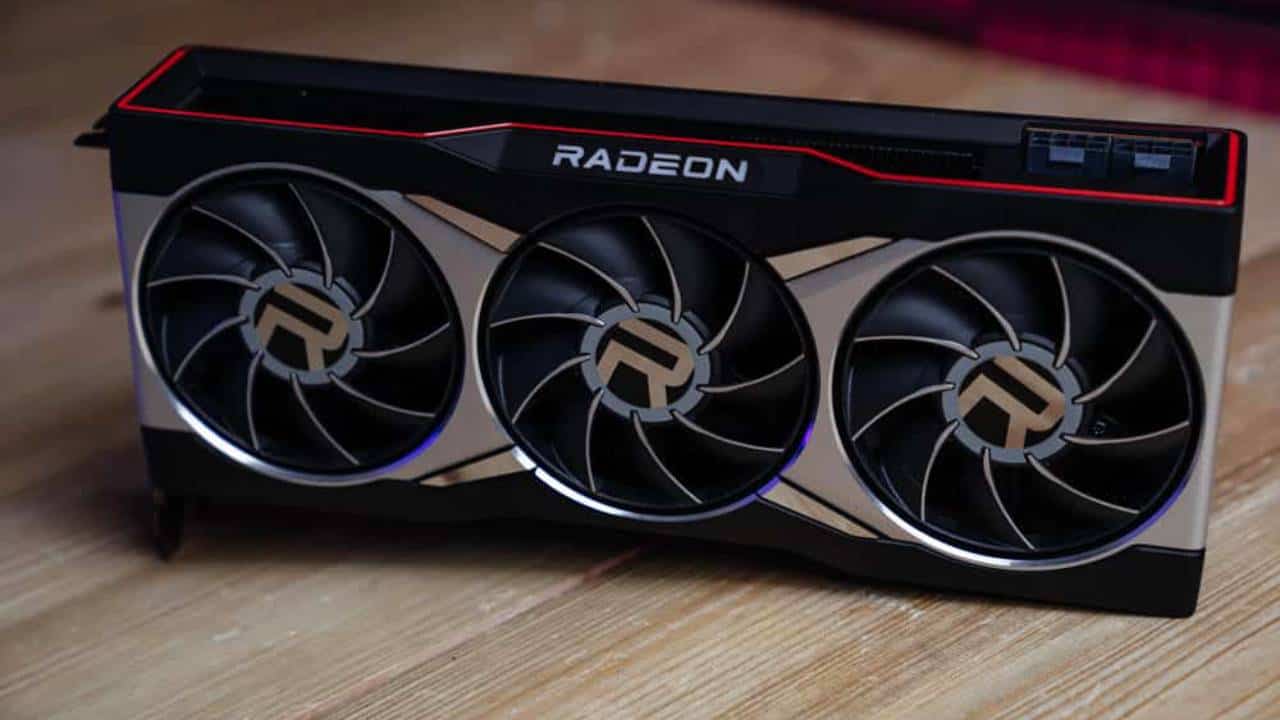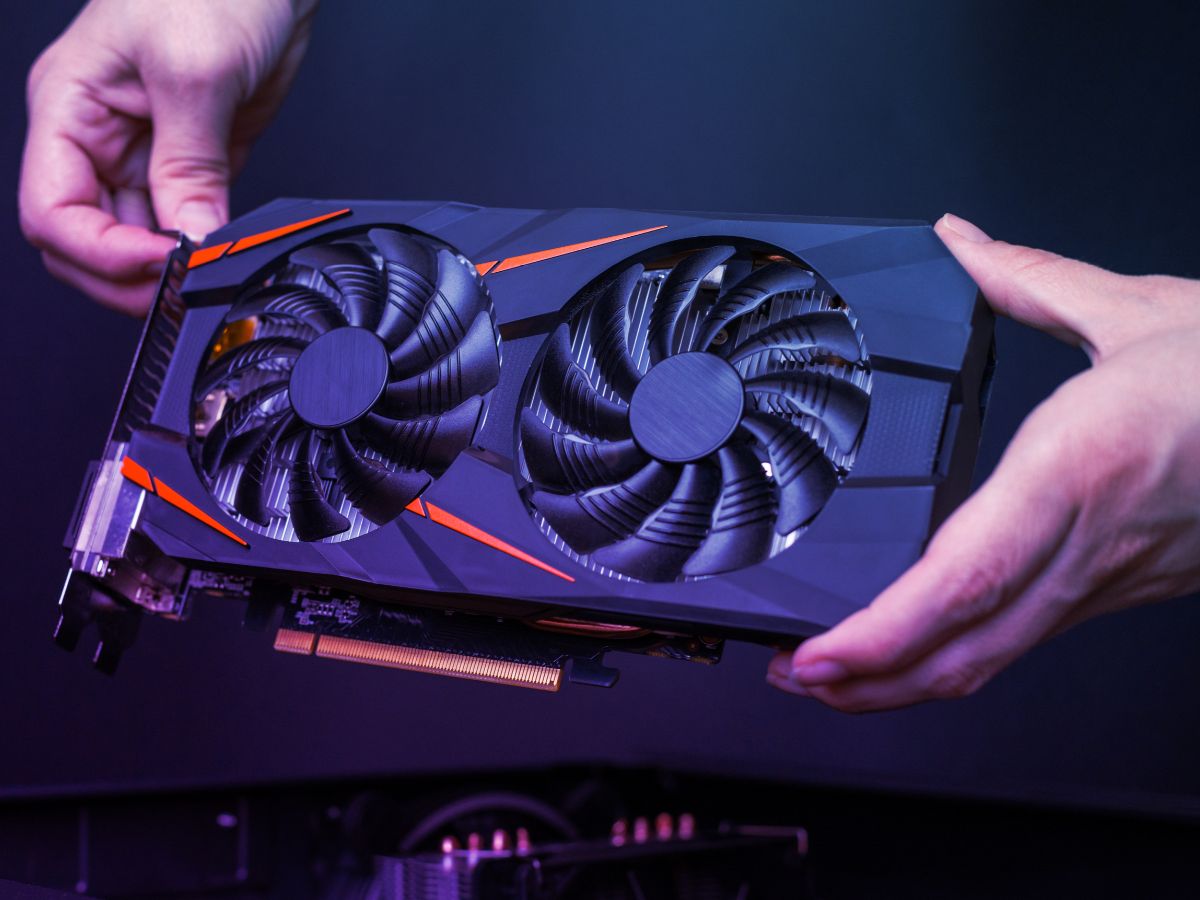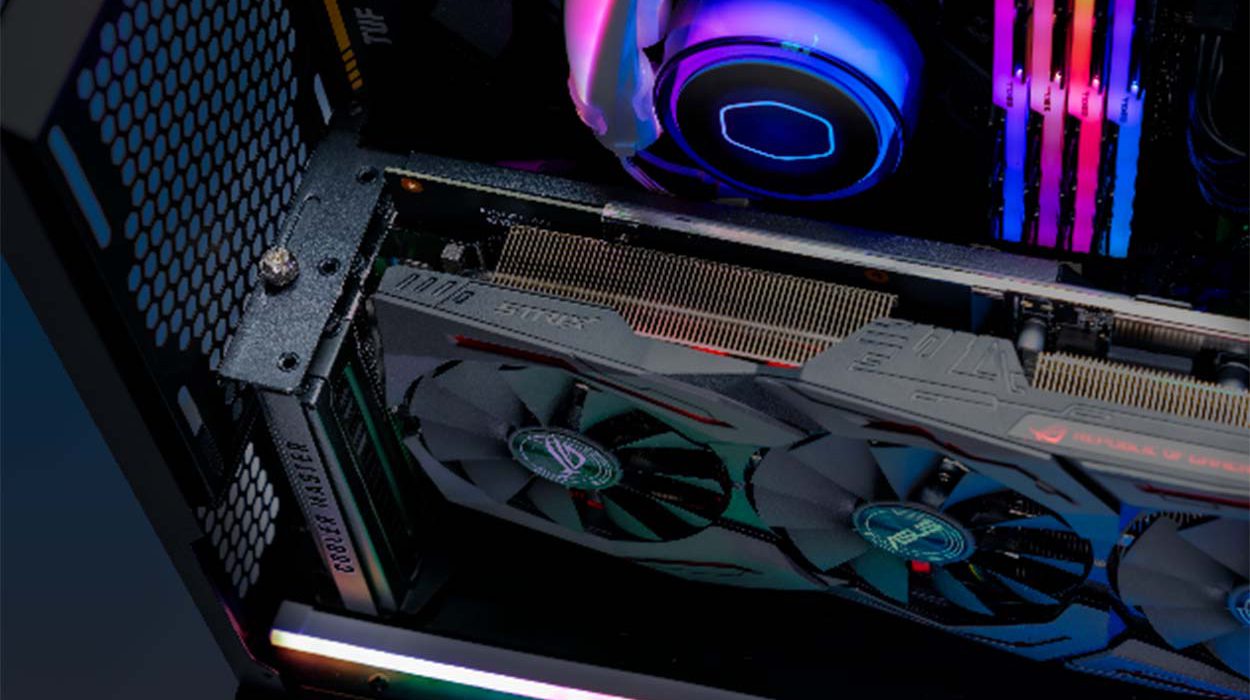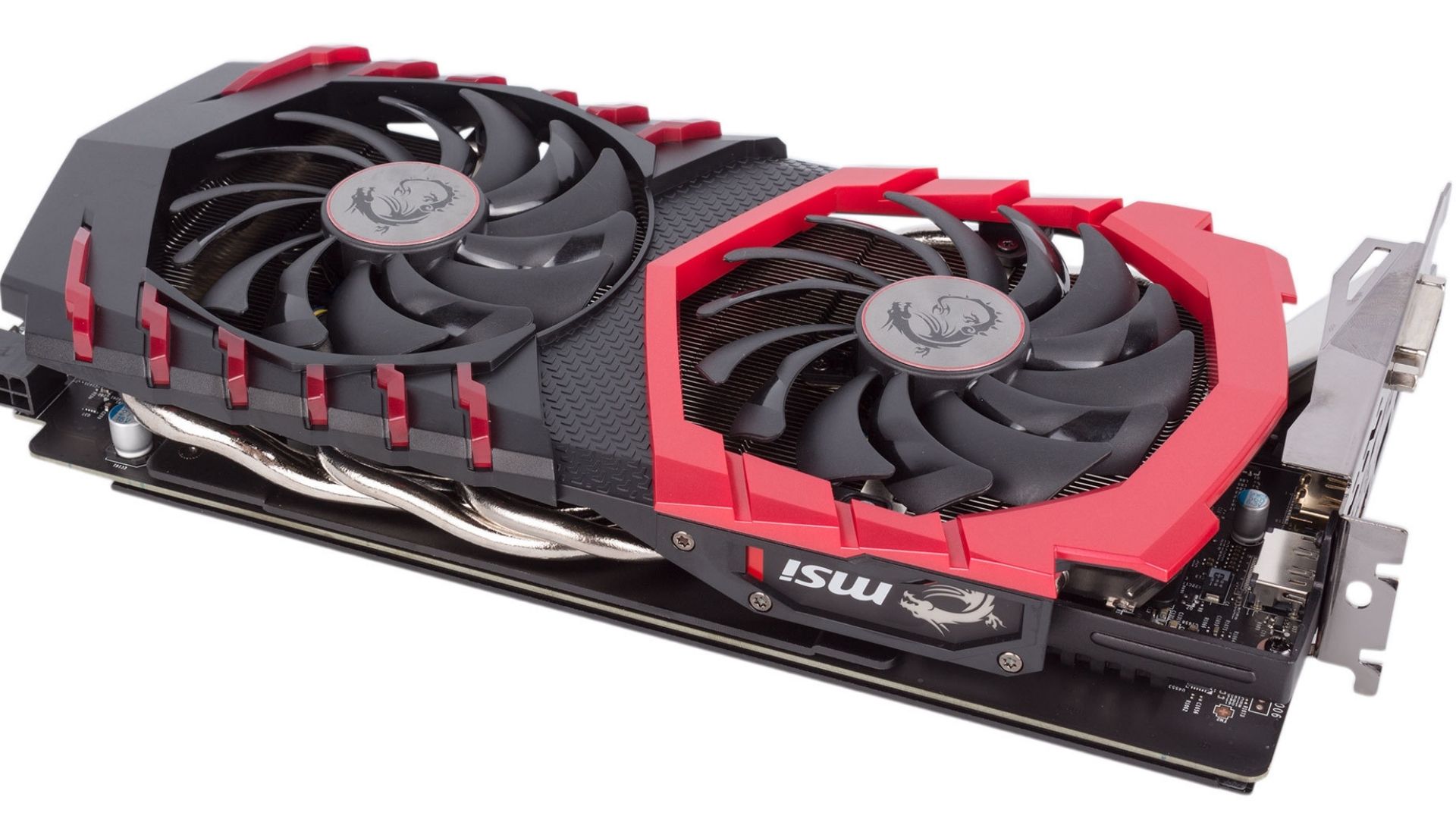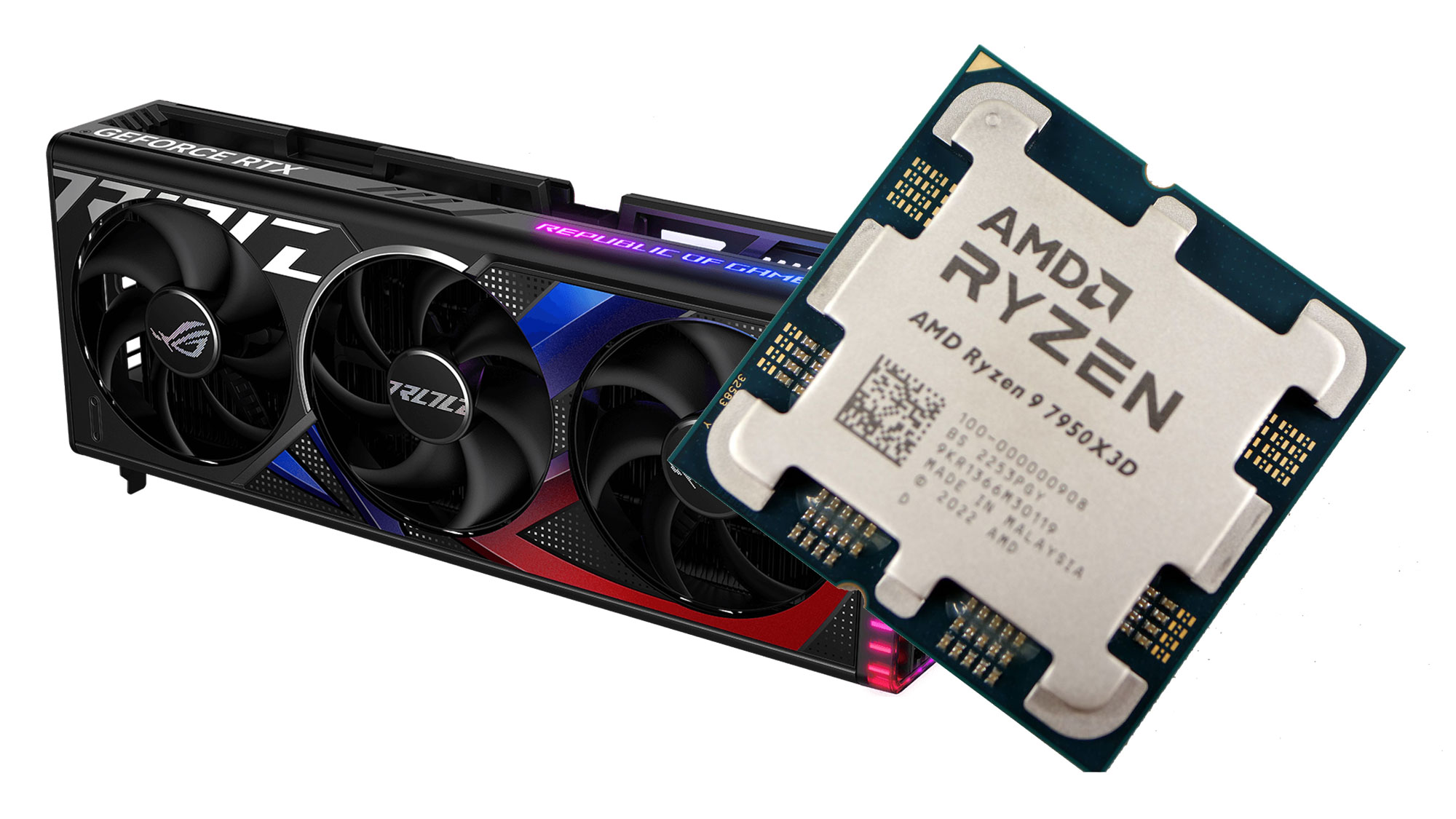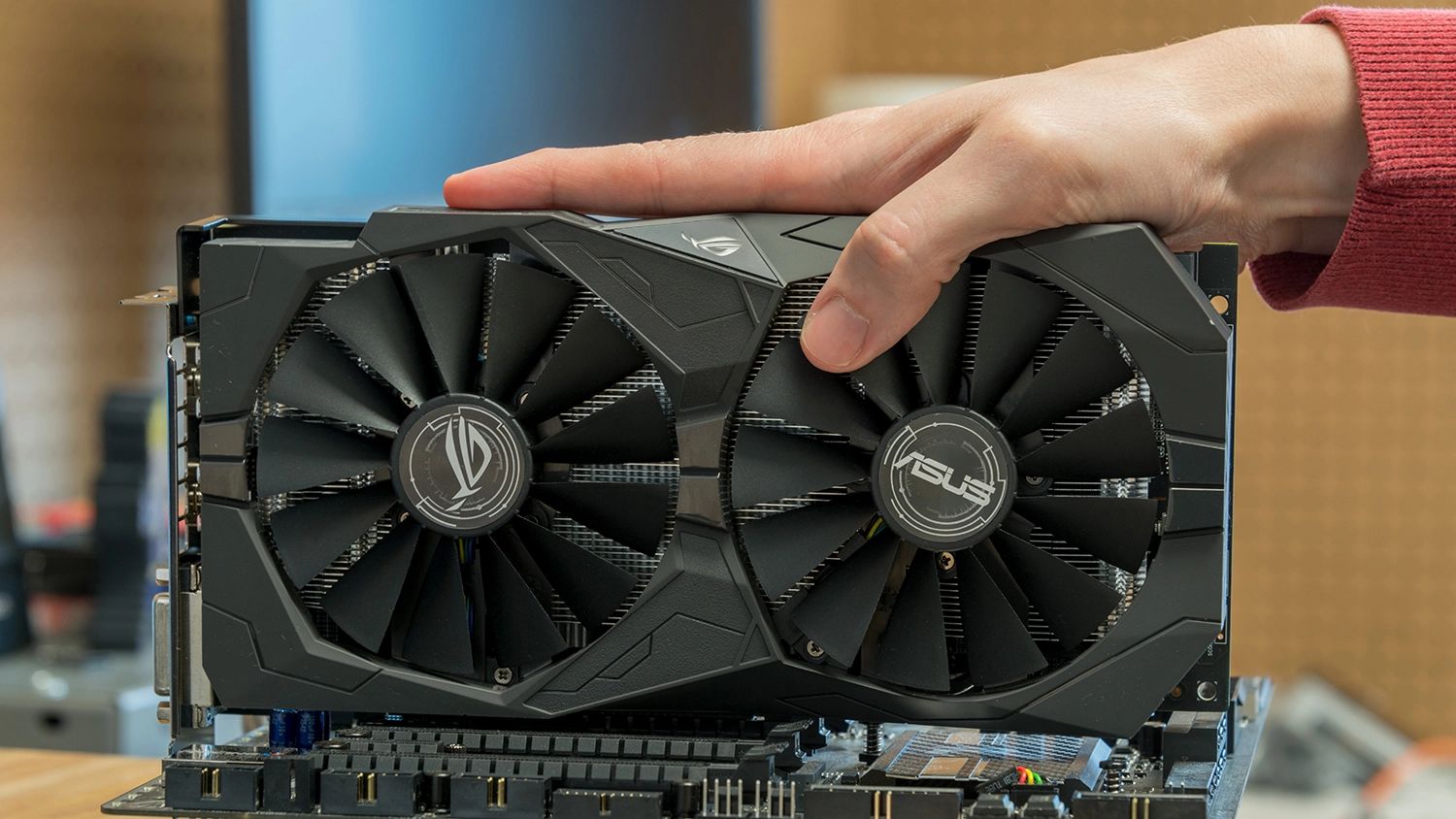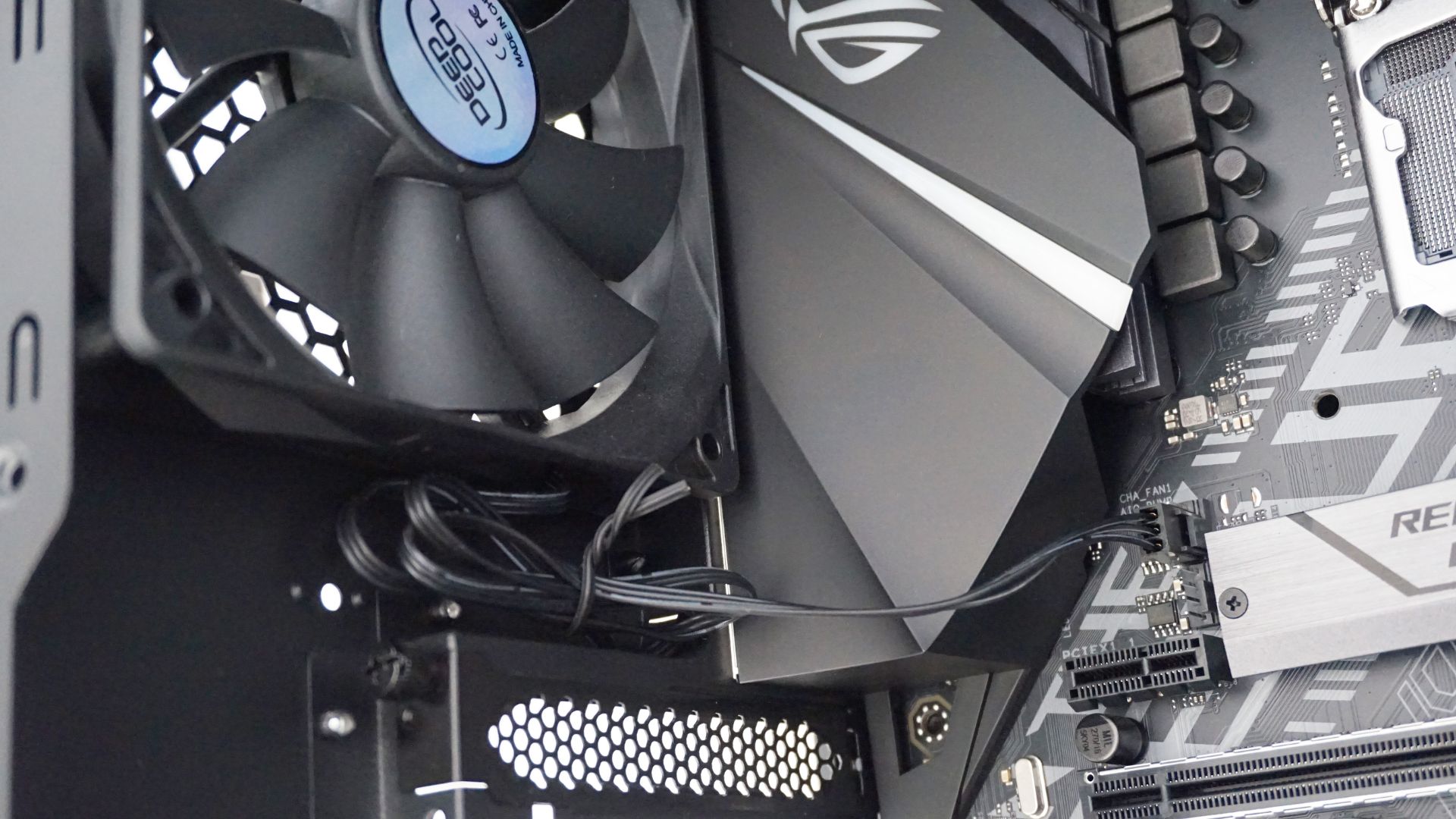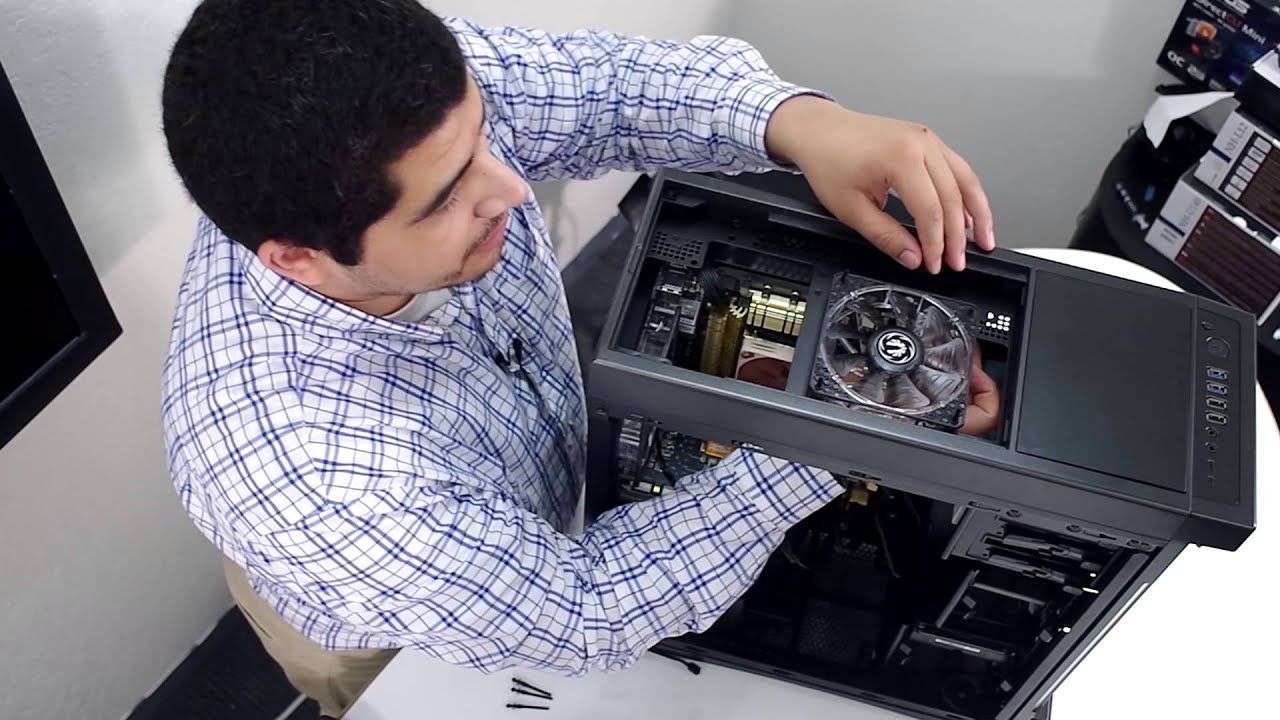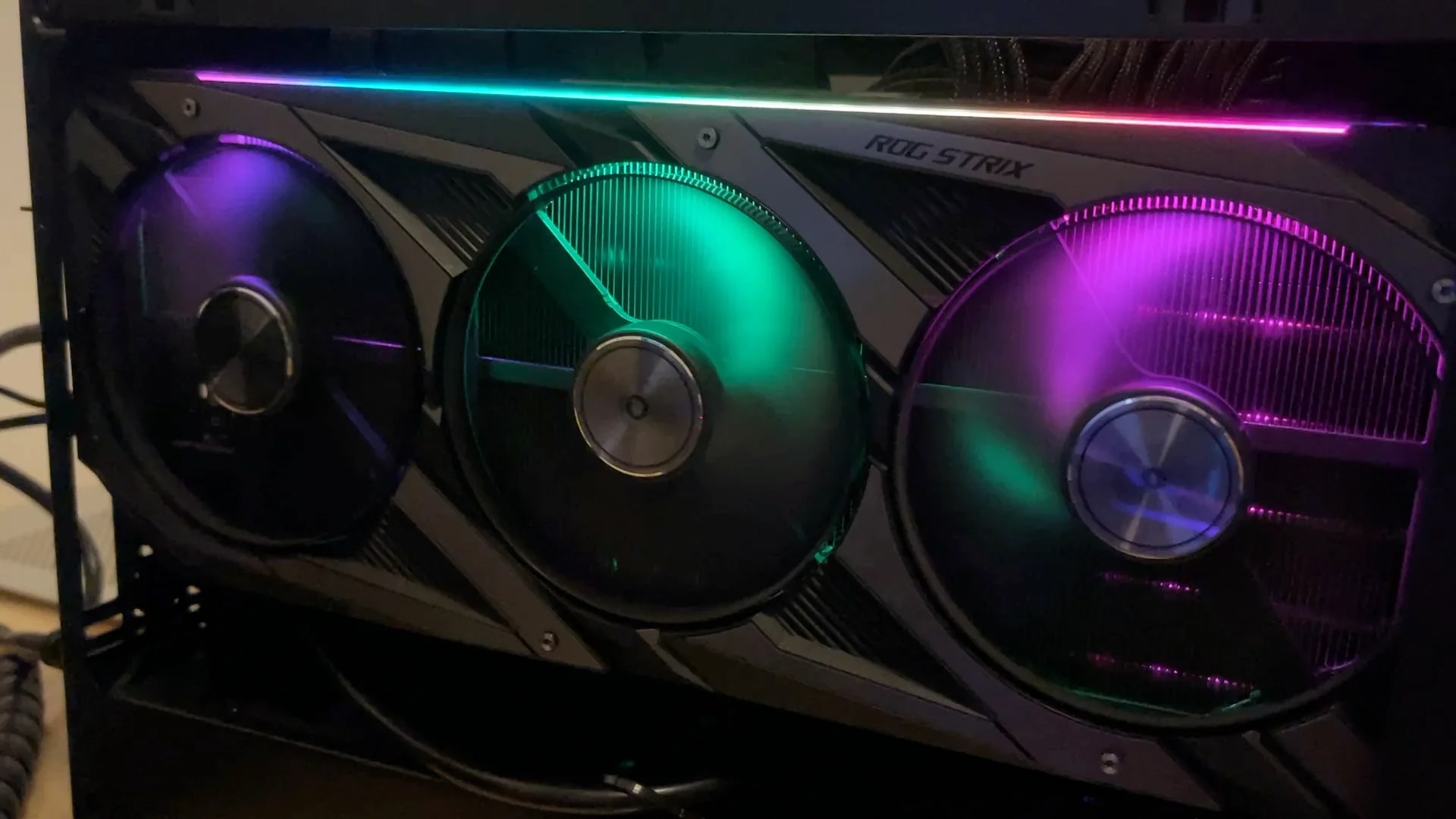Introduction
Controlling the case fan speed based on GPU temperature can greatly optimize your computer’s cooling system and ensure efficient operation. The case fans play a crucial role in maintaining the temperature of your GPU, which is responsible for rendering graphics-intensive applications. By adjusting the fan speed according to the GPU temperature, you can prevent overheating and enhance the overall performance and lifespan of your graphics card.
Traditionally, case fans have been controlled by the computer’s motherboard or a fan controller. However, with the advancements in technology, it is now possible to directly connect your case fans to the GPU and control their speed based on the GPU temperature. This allows for a more accurate and targeted cooling approach, as the GPU temperature is a key indicator of the workload and heat generated by your graphics card.
By monitoring and adjusting the case fan speed based on the GPU temperature, you can ensure that your graphics card operates within optimal temperature limits. This not only helps in preventing thermal throttling and performance drops but also reduces the risk of long-term damage to your GPU due to prolonged exposure to high temperatures.
Furthermore, controlling the fan speed can also have a significant impact on the noise levels of your system. By adjusting the fan speed intelligently, you can strike a balance between cooling performance and noise production. This allows for a quieter computing experience, especially during idle or less demanding tasks, without compromising on the cooling efficiency.
In this article, we will explore how to connect your case fans to your GPU, monitor the GPU temperature, choose the right software for fan control, set up fan control profiles, and test and adjust fan speeds accordingly. Additionally, we will provide some tips for optimizing fan control to ensure the best possible cooling performance for your computer.
Understanding the Importance of Controlling Case Fan Speed
Controlling case fan speed based on GPU temperature is crucial for maintaining optimal performance and temperature levels for your computer. A well-regulated cooling system helps prevent overheating and ensures stable operation of your components, particularly the GPU.
When your computer is running graphics-intensive applications or games, the GPU works harder and generates more heat. If the case fans are not adjusted properly, the temperature inside the computer case can rise to unsafe levels, leading to thermal throttling and reduced performance.
By controlling the case fan speed based on GPU temperature, you can ensure that heat is dissipated effectively, preventing thermal buildup. This not only helps in maintaining stable performance but also extends the lifespan of your GPU. Components that operate at higher temperatures are more prone to wear and tear, which can lead to permanent damage or failure in the long run.
Another important aspect of controlling case fan speed is noise reduction. Case fans, especially at high speeds, can generate a significant amount of noise. By adjusting the fan speed based on GPU temperature, you can strike a balance between cooling efficiency and noise production. During idle or less demanding tasks, the fan speed can be decreased to minimize noise levels, providing a quieter computing experience.
In addition to improving performance and reducing noise, controlling case fan speed also allows for energy efficiency. By adjusting fan speeds based on workload and temperature, you can limit power consumption and reduce the strain on your power supply unit. This can lead to lower energy bills and a more sustainable computing setup.
Overall, properly controlling case fan speed based on GPU temperature is essential for maintaining a stable and efficient computer system. It ensures that your GPU operates within optimal temperature limits, maximizing performance while minimizing the risk of overheating. Additionally, it helps create a quieter and more energy-efficient computing experience. In the following sections, we will delve deeper into the process of connecting case fans to your GPU and configuring fan control based on GPU temperature.
Connecting Case Fans to Your GPU
To control the case fan speed based on GPU temperature, you will need to connect your case fans directly to your GPU. This can be done using the GPU’s fan headers, which are specifically designed to provide power and control signals for case fans.
First, identify the fan headers on your GPU. Depending on the model, you may have one or more fan headers available. These headers are usually located on the side or top of the GPU and are labeled as “FAN” or “SYS_FAN”. Refer to your GPU’s documentation or manufacturer’s website for specific information on the location and number of fan headers.
Once you have located the fan headers, you will need to connect the case fans to them. Most case fans use a 3-pin or 4-pin connector. If your GPU’s fan headers are 4-pin, you can directly connect the case fan’s 4-pin connector to the GPU. If your case fans have 3-pin connectors, you can still connect them to a 4-pin GPU fan header; the extra pin is for PWM (Pulse Width Modulation) control, which allows for more precise fan speed regulation.
If you have more case fans than available fan headers on your GPU, you can use fan splitters or fan hub solutions. Fan splitters allow you to connect multiple case fans to a single fan header, while fan hubs provide a centralized hub to connect and control multiple case fans simultaneously. Ensure that the total power draw of the connected fans does not exceed the maximum power output of the GPU’s fan header.
Once the case fans are connected to the GPU’s fan headers, the GPU will be able to detect and control their speed based on the GPU temperature. This direct connection ensures that the cooling is more responsive and accurate since the GPU temperature directly influences the fan speed.
In the next section, we will explore the process of monitoring the GPU temperature to effectively control the case fan speed.
Monitoring GPU Temperature
In order to control the case fan speed based on GPU temperature, it is important to have a reliable method for monitoring the GPU temperature. By regularly monitoring the temperature, you can make informed decisions about adjusting the fan speed to ensure optimal cooling.
There are several software applications available that provide real-time monitoring of GPU temperature. Some popular options include MSI Afterburner, HWMonitor, and GPU-Z. These programs not only display the current GPU temperature but also provide additional information such as clock speeds, voltage, and fan speeds.
Once you have installed the monitoring software of your choice, launch it and navigate to the temperature section. Here, you should be able to see the current GPU temperature displayed in degrees Celsius or Fahrenheit. It is recommended to keep the monitoring software running in the background while using your computer so that you can easily keep track of the GPU temperature.
It’s important to note that GPU temperature can vary depending on the workload and ambient temperature. During intense gaming or rendering, the GPU temperature may rise significantly. Conversely, during idle or less demanding tasks, the temperature may be lower. By monitoring the temperature under different scenarios, you can gain a better understanding of your GPU’s thermal behavior.
Monitoring the GPU temperature is a crucial step in controlling the case fan speed accurately. By keeping a close eye on the temperature, you can determine when to ramp up the fan speed to ensure effective cooling and when to reduce the speed to minimize noise levels.
In the following section, we will discuss the importance of choosing the right software for controlling the case fan speed based on GPU temperature.
Choosing the Right Software
When it comes to controlling the case fan speed based on GPU temperature, selecting the right software is crucial. There are various software options available, each with its own features and compatibility. Here are some factors to consider when choosing the software for fan control:
Compatibility: Ensure that the software is compatible with your GPU model and the operating system of your computer. Check the manufacturer’s website or user forums to confirm compatibility before downloading and installing the software.
User-Friendly Interface: Look for software that offers an intuitive and user-friendly interface. This will make it easier for you to navigate through the settings and configure the fan control profiles according to your preferences.
Temperature Monitoring: The software should provide real-time monitoring of GPU temperature, allowing you to accurately track the temperature fluctuations. Additionally, it should offer customizable temperature thresholds, enabling you to define when the fan speed should be adjusted.
Fan Speed Control Options: The software should provide various fan speed control options, such as manual control, automatic control, and predefined fan curves. This will give you the flexibility to choose the fan control method that suits your needs best.
Reliability and Stability: Opt for software that is known for its reliability and stability. Read user reviews and seek recommendations from trusted sources to ensure that the software does not have any major bugs or stability issues.
Additional Features: Some software applications offer additional features, such as overclocking capabilities, GPU voltage control, and system monitoring. Consider whether these additional features are essential for your requirements and choose accordingly.
Once you have selected the software that meets your criteria, download and install it on your computer. Familiarize yourself with the interface and explore the available options for fan control and temperature monitoring.
In the next section, we will delve into the process of setting up fan control profiles based on GPU temperature to effectively regulate the case fan speed.
Setting up Fan Control Profiles
After selecting the appropriate software for controlling case fan speed based on GPU temperature, the next step is to set up fan control profiles. These profiles dictate how the fan speed will be adjusted in response to changes in GPU temperature.
The specific steps may vary depending on the software you are using, but the general process involves creating and configuring fan curves or defining temperature thresholds for fan speed adjustment.
One common method is to create a fan curve, which represents the relationship between GPU temperature and fan speed. The curve typically consists of points that correspond to different temperature levels. For example, at lower temperatures, the fan speed may be set to a lower value for silent operation. As the temperature rises, the fan speed gradually increases to provide more cooling power.
When setting up a fan curve, consider the cooling needs of your GPU and the noise levels you’re comfortable with. Optimize the curve to strike a balance between cooling performance and noise production.
If your software doesn’t offer a fan curve option, you can define temperature thresholds. For each threshold, you specify a fan speed or percentage at which the case fans should operate. For example, when the GPU temperature reaches 60°C, the fans may start running at 50% speed. As the temperature continues to rise, you can increase the fan speed gradually to maintain a safe operating temperature.
Experiment with different fan control profiles to find the settings that work best for your system. Monitor the GPU temperature and observe the fan speed behavior to ensure that the cooling is efficient and the noise levels are acceptable.
It’s also worth noting that some software allows you to create multiple profiles, which can be useful if you have different cooling requirements for various tasks or scenarios. For example, you might want a more aggressive fan curve for gaming sessions and a quieter profile for everyday tasks. Switch between profiles as needed or set them to automatically activate based on specific triggers.
Remember to save your fan control profiles once you have configured them. This ensures that the settings are applied each time you start your computer or launch the software.
In the next section, we will discuss how to test and adjust the case fan speeds to optimize cooling performance.
Testing and Adjusting Fan Speeds
Once you have set up your fan control profiles, it is important to test and adjust the fan speeds to ensure optimal cooling performance. Here are the steps to follow:
- Run GPU-intensive tasks: To assess the effectiveness of your fan control profiles, run GPU-intensive tasks such as gaming or rendering. Monitor the GPU temperature and observe how the fan speed responds to the temperature changes.
- Check temperature thresholds: Keep an eye on the GPU temperature and check if it stays within acceptable limits during these tasks. If the temperature exceeds safe levels, you may need to adjust the fan control profiles to increase the fan speed at certain temperature thresholds.
- Listen for noise levels: Pay attention to the noise produced by the case fans at different fan speeds. If the noise becomes too loud or bothersome, consider tweaking the profiles to find a balance between cooling performance and noise reduction.
- Make gradual adjustments: Instead of making drastic changes to the fan control profiles, make small adjustments and observe the impact on cooling performance and noise levels. This will help you fine-tune the settings for optimal results.
- Perform stability tests: To ensure that the adjusted fan speeds do not cause stability issues, run stability tests or benchmarks to stress your GPU. Keep an eye on the temperature and verify that it remains stable within safe operating limits.
Continue testing and making adjustments as necessary until you find the optimal fan speeds that keep your GPU temperature in check while maintaining an acceptable noise level. Remember that every system is different, so the ideal fan control settings may vary.
Additionally, it is a good practice to periodically monitor the GPU temperature and review the fan control profiles to ensure they are still providing effective cooling. Over time, factors such as dust accumulation or changes in ambient temperature may require slight modifications to maintain optimal performance.
By regularly testing and adjusting the fan speeds, you can optimize cooling efficiency, prevent overheating, and ensure the longevity of your GPU.
In the next section, we will provide some additional tips for achieving optimal fan control and cooling performance.
Tips for Optimal Fan Control
Controlling the case fan speed based on GPU temperature requires careful consideration and adjustments to achieve optimal cooling performance. Here are some tips to help you optimize fan control:
- Find the right balance: Experiment with different fan control profiles to strike a balance between cooling performance and noise levels. Aim for efficient cooling without excessive fan noise.
- Regularly clean your system: Dust accumulation can obstruct airflow and impact cooling performance. Regularly clean your system, especially the case fans and heatsinks, to maintain optimal airflow.
- Consider fan placement: Properly position your case fans to maximize airflow and target hotspots. Position fans to push cool air towards components like the GPU and exhaust hot air out of the case.
- Monitor ambient temperature: Pay attention to the ambient temperature of the room where your computer is located. High room temperatures can affect overall system cooling and may require adjustments to fan control profiles.
- Invest in quality case fans: High-quality case fans with a good airflow-to-noise ratio can enhance cooling efficiency. Consider investing in fans that strike a balance between performance and noise reduction.
- Regularly update software: Keep your fan control software up to date to ensure compatibility with the latest GPUs and operating systems. Software updates may also bring improvements to fan control algorithms.
- Consider aftermarket cooling solutions: If you frequently run demanding tasks or overclock your GPU, you may benefit from aftermarket cooling solutions such as larger heatsinks or liquid cooling systems. These can provide better cooling performance for your GPU.
- Monitor other component temperatures: While GPU temperature is critical, it’s also important to monitor the temperatures of other components like the CPU and motherboard. Keep an eye on their temperatures to ensure overall system stability.
Remember that every system is unique, and what works for one may not work for another. It’s important to regularly monitor and adjust the fan control settings based on your specific needs and system requirements.
By following these tips and regularly optimizing your fan control settings, you can maintain optimal cooling performance and ensure the longevity of your GPU and other components.
Now that you have a better understanding of optimal fan control, let’s conclude with a summary of the main points discussed in this article.
Conclusion
Controlling the case fan speed based on GPU temperature is a crucial aspect of optimizing cooling performance and ensuring the longevity of your computer system. By connecting your case fans to your GPU and monitoring its temperature, you can make informed decisions about adjusting the fan speed to maintain optimal cooling.
Throughout this article, we have explored the importance of controlling case fan speed, connecting case fans to your GPU, monitoring GPU temperature, choosing the right software, setting up fan control profiles, and testing and adjusting fan speeds for optimal performance. We have also provided tips for achieving optimal fan control and cooling efficiency.
By adjusting the case fan speed based on GPU temperature, you can prevent overheating, reduce the risk of performance drops, extend the lifespan of your GPU, and create a quieter computing experience. With the right software and fan control profiles in place, you can strike a balance between cooling performance and noise levels.
Remember to regularly monitor and adjust the fan control settings based on your system’s needs and specific requirements. Keep your system clean, consider fan placement, and invest in quality case fans to enhance cooling efficiency. Additionally, monitoring ambient temperature and other component temperatures can contribute to overall system stability.
Ultimately, optimizing fan control based on GPU temperature ensures that your computer operates within safe temperature limits and maximizes performance. By implementing these strategies, you can create an efficient and reliable cooling system that benefits both the longevity of your components and your overall computing experience.
We hope that this article has provided valuable insights and guidance on controlling case fan speed by GPU temperature. Apply these principles to your own system and enjoy a well-regulated cooling setup that keeps your computer running smoothly.







